Did you know that onions, those staple kitchen ingredients, can actually produce stunning flowers? Yes, you heard it right! Onions, members of the lily family, have the potential to unleash their hidden beauty in the form of delicate onion flowers. These flowers come in white, yellow, or purple colors, with large, rounded shapes and velvety petals. Blooming in the spring, they emit a sweet and mild fragrance that can enchant any garden.
Key Takeaways:
- Onions can produce beautiful flowers, known as onion flowers.
- Onion flowers come in white, yellow, or purple colors.
- They have a round shape and soft, velvety petals.
- Onion flowers bloom in the spring and emit a sweet fragrance.
- They can enhance the beauty of any garden.
What Color is an Onion Flower?
When it comes to the beautiful onion flower, the color is a topic of fascination for many gardeners. The onion flower showcases a vibrant and mesmerizing purple hue, ranging from a delicate light lavender to a deep and intense black-purple shade. This stunning color is a definitive characteristic that distinguishes the onion flower from other flowers in the garden.
The journey of the onion flower’s color begins with a small, closed bulb of petals, which emerges in a deep purple shade. As the flower gradually unfurls, it unveils the true splendor of its vivid purple coloration. Once the onion flower has fully blossomed and gracefully fallen off the plant, this serves as a clear signal to gardeners that the onion is ready for harvesting.
Witnessing the transformation of the onion flower’s color, from the initial deep purple bud to the glorious burst of purple petals, is a remarkable sight and a rewarding experience for any gardener. The onion flower’s vibrant purple hue adds a touch of visual delight to gardens and floral arrangements, making it an irresistible choice for those seeking natural beauty.
“The onion flower’s enchanting purple color signifies both the readiness of the onion for harvesting and the exquisiteness of nature’s palette.”
Immerse yourself in the captivating beauty of the onion flower’s color through this visually stunning depiction.
| Color | Description |
|---|---|
| Light Lavender | A soft, delicate purple shade that exudes elegance and serenity. |
| Deep Purple | An intense and captivating color that commands attention and adds a touch of drama to any garden or floral arrangement. |
| Black-Purple | A rich and dark purple hue that borders on black, showcasing depth and sophistication. |
“The onion flower’s color ranges from light lavender to deep black-purple, offering a spectrum of shades that can suit any gardener’s preferences.”
The onion flower’s mesmerizing purple color is truly a sight to behold. Its vibrancy and allure add an element of enchantment to any garden or floral display. Whether you’re a passionate gardener or simply appreciate the wonders of nature, the onion flower’s striking purple color will leave you captivated and inspired.
Where can an Onion Flower be Found?
If you’re looking to add the beautiful and captivating onion flower to your garden, you’ll be pleased to know that they can be found in a variety of places. Whether you prefer shopping in-store or online, there are options available to suit your needs.
Local Seed and Garden Stores
The first place to check for onion flowers is your local seed or garden store. These establishments typically carry a variety of onion bulbs that can be purchased and planted in your garden. Browse their selection and choose the onion bulbs that best suit your preferences in terms of color, size, and variety.
Online Websites
If you prefer the convenience of online shopping, there are numerous websites that offer onion bulbs for sale. Simply search for “onion bulbs” on your favorite search engine and explore the options available. Some online retailers may even offer free shipping, making it even easier to get your hands on onion bulbs and start growing your own onion flowers.
Growing from Seed
For a unique and rewarding experience, you can also choose to grow onion flowers from seed. This allows you to have full control over the growth and development of the plants, from the very beginning. Look for onion flower seeds at your local garden store or purchase them online. Follow the instructions provided with the seeds to ensure successful germination and growth.
Wild Locations
If you prefer a more adventurous approach, you can even find onion flowers in the wild. Explore meadows, fields, and gardens near streams for the chance to spot these beautiful flowers in their natural habitat. Keep in mind that wild onion flowers may differ slightly in appearance compared to cultivated varieties, but they still offer the same beauty and charm.
No matter where you choose to find your onion flowers, they are sure to add a touch of elegance and allure to your garden. Whether you opt for store-bought bulbs or decide to grow from seed, these stunning flowers will delight your senses and create a visually pleasing landscape.
How Long does an Onion Flower Last?
The lifespan of an onion flower can vary depending on the variety and the environmental conditions it is grown in. Generally, onion flowers can last anywhere from 2 days up to 2 weeks. Larger onion flowers tend to last longer than smaller ones. Factors like temperature and water availability can also affect the lifespan of the flower. Providing the proper amount of sunlight, water, and deadheading (removing spent flowers) can help extend the life of the onion flower.
It is fascinating to witness the onion flower’s journey unfold, from its vibrant bloom to its eventual wilting. The duration of an onion flower’s lifespan is influenced by several key factors, including its variety, size, and the conditions in which it grows.
Typically, onion flowers have a relatively short lifespan. Smaller onion flowers may only last for a couple of days, while larger ones can endure for up to two weeks. The magnificent spectacle of a fully bloomed onion flower is a sight to behold, and it is intriguing to witness its gradual transformation over time.
“The beauty of the onion flower lies not only in its visual appeal but also in its transient nature.”
– Gardening enthusiast
The onion flower’s lifespan is influenced by environmental factors such as temperature, water availability, and the overall health of the plant. By providing adequate sunlight, water, and proper care, you can help prolong the life of the onion flower and enjoy its captivating presence for a longer duration.
Onion flowers also benefit from the process of deadheading, which involves removing wilted or spent flowers. This simple act promotes the plant’s energy towards new growth and may extend the lifespan of the onion flower.
It’s important to note that the exact duration of an onion flower’s lifespan may vary depending on the specific onion variety and the conditions in which it is cultivated. Just as each bloom is unique, so too is the lifespan it encompasses.
Next, let’s explore the remarkable size range of onion flowers and the visual impact they can have on a garden.
Lifespan of Different Onion Flower Varieties
| Variety | Average Lifespan |
|---|---|
| Purple Onion Flower | 10-14 days |
| White Onion Flower | 7-10 days |
| Yellow Onion Flower | 5-7 days |
As depicted in the table above, different onion flower varieties have varying lifespans. The purple onion flower tends to have the longest average lifespan, lasting from 10 to 14 days. The white and yellow onion flowers have slightly shorter durations, with an average lifespan of 7 to 10 days and 5 to 7 days, respectively.
Understanding the lifespan of onion flowers allows gardeners to appreciate and make the most of their beauty while they are in full bloom. Whether you have a single onion flower or a whole garden full of them, their fleeting presence adds a touch of enchantment to any outdoor space.
With an understanding of the onion flower’s lifecycle, let’s now delve into the remarkable range of sizes these captivating blossoms can attain.
How Big is an Onion Flower?
The size of an onion flower can vary depending on the variety being grown. Some onion flowers can reach a size of up to 12 inches across, while others remain smaller, around 2 inches in diameter.
The color of the flower can also vary, with many varieties being purple or white, but there are also yellow and pink varieties available. Onion flowers add a unique and beautiful touch to any garden, with their large blooms and vibrant colors.
What Does the Onion Flower Smell Like?
The onion flower has a distinctive smell that is described as pungent, spicy, and earthy, with a hint of sweetness. The scent of the flower is often considered pleasant and invigorating. The smell of the onion flower is due to a compound called allyl propyl disulfide, as well as other compounds like allicin and propanethial sulfoxide. These compounds give the onion its characteristic flavor and aroma.
Growing onion flowers requires ample sunlight and well-drained soil, and they can be enjoyed in various culinary creations.
Enhancing Culinary Delights with Onion Flowers
Onion flowers’ unique aroma makes them a valuable ingredient in various dishes. The pungent and earthy qualities add depth of flavor and complexity to recipes. These flowers can be used to impart a distinct onion essence to soups, stews, sauces, and dips. They can also be incorporated into savory pastries, bread, and pizza crusts, providing a delightful fragrance and taste. Furthermore, pickled onion flowers can elevate cheese platters and charcuterie boards, adding a tangy and aesthetically pleasing element.
When using onion flowers in cooking, it’s important to remember that their pungency may vary. Adjust the quantity according to personal preference and the desired intensity of the dish. Experimentation is key to discovering the perfect balance between the distinct onion flower aroma and other ingredients.
| Culinary Uses of Onion Flowers | Recipe Examples |
|---|---|
| 1. Salads | Spring Onion and Avocado Salad with Onion Flower Vinaigrette |
| 2. Sauces and Dips | Caramelized Onion Flower Jam Roasted Garlic and Onion Flower Aioli |
| 3. Breads and Pastries | Onion Flower Focaccia Onion Flower and Cheddar Scones |
| 4. Cheese and Charcuterie | Onion Flower Pickles Onion Flower and Brie Crostini |
Understanding Green Onions and Their Floral Component
Green onions, also known as scallions or spring onions, are young shoots of the Allium species, harvested before they reach full maturity. These versatile alliums can produce flowers, known as bolting, when they mature. Bolting is a natural response to changing weather conditions and indicates that the green onion is focusing on seed production. It is recommended to harvest green onions before they flower for optimal taste and texture.
When green onions bolt and produce flowers, it diverts energy away from the development of the edible portion, resulting in a less desirable taste and texture. Therefore, it is best to harvest green onions at an earlier stage when they are still tender and flavorful.
“While the flowers of green onions can be visually appealing, they indicate a loss in the quality of the edible portion of the plant. Harvesting green onions before they bolt ensures the best culinary experience.”
To ensure the freshest taste and highest quality, it is recommended to harvest green onions when the leaves are long and the bulbs are firm. Avoid green onions with wilted or yellowing leaves, as they may have already begun to bolt. By harvesting green onions at the right time, you can enjoy their crispness and mild onion flavor in a variety of dishes.
Traditional and Modern Recipes Featuring Green Onions
Green onions, also known as scallions or spring onions, are a versatile ingredient that plays a prominent role in many cuisines worldwide. These flavorful alliums add a touch of freshness and zest to various dishes, elevating their taste and visual appeal.
Traditional Culinary Delights
When it comes to traditional Asian cuisine, green onions are more than just a garnish. They are a fundamental ingredient that adds a subtle onion flavor to soups, stir-fries, and dumplings. In Mexican culinary traditions, green onions are an essential component of vibrant salsas, hearty enchiladas, and mouthwatering tacos. Middle Eastern cuisines incorporate green onions in refreshing tabbouleh and other salads, enhancing their taste and texture. European cuisines frequently feature green onions in classic dishes such as potato salads, quiches, and savory tarts, providing a delightful twist.
“Green onions bring a burst of freshness to traditional dishes, infusing them with a unique combination of flavors.”
Modern Culinary Adventures
The versatility of green onions extends beyond traditional recipes. Today, culinary explorations have unlocked new dimensions for these vibrant ingredients, expanding their applications and enhancing their impact on dishes. Modern chefs experiment with grilling green onions to achieve a subtly charred flavor, adding depth and complexity to their creations. Pickling green onions has also become a popular trend, offering a tangy twist that pairs well with various cuisines.
“Modern recipes have pushed the boundaries of green onions, bringing out their full potential and transforming them into culinary sensations.”
Discover the exciting possibilities of cooking with green onions and elevate your dishes with their fresh, flavorful presence. Whether you’re preparing a traditional family recipe or venturing into the realm of modern culinary artistry, green onions are sure to leave an unforgettable impression on your taste buds.
Innovative Ways to Incorporate Flowering Green Onions in Cooking
Flowering green onions provide exciting culinary opportunities that go beyond their usual role as aromatic vegetables. The delicate white or purple flowers can elevate the visual appeal and taste of various dishes.
When it comes to creating stunning salads, the flowering green onion blossoms can be used as elegant embellishments. These beautiful flowers add a touch of sophistication and a pop of color to any salad bowl, making it a feast for the eyes. They can also be added to flavored butters and creams, introducing a subtle onion essence into your savory spreads.
For those looking to enhance the presentation of soups, canapés, and deviled eggs, the flowering green onion blossoms can be utilized as charming garnishes. Their delicate petals and attractive hues bring a touch of visual finesse to these culinary delights, making them hard to resist.
To infuse a burst of flavor into dressings and marinades, consider incorporating the flowering green onions. By infusing them in vinegar or oil, you unlock their unique onion essence, adding depth to your homemade dressings and marinades. The result? A tantalizing blend that elevates your dishes to new flavor heights.
If you’re looking to add some crunch to your meals, try battering and frying the flowering green onion blossoms. The delicate petals turn crisp and golden when fried, making them a delectable topping for various dishes. From salads to stir-fries, these crunchy blossoms take your culinary creations to the next level.
To further enhance the flavors in your stir-fries, consider adding the flowering green onion blossoms alongside other vegetables. Not only do they bring a subtle onion taste, but their vibrant colors and delicate petals also add visual appeal to your dishes.
Here’s a visual representation of the innovative ways to incorporate flowering green onions into your cooking:
| Recipe Ideas | Description |
|---|---|
| Sprinkle on Salads | Add flowering green onion blossoms as a visually stunning garnish for salads, providing both color and flavor. |
| Flavored Butters and Creams | Mix flowering green onion petals into softened butter or cream cheese for a unique twist. |
| Garnish for Soups, Canapés, and Deviled Eggs | Place a delicate flowering green onion blossom atop soups, canapés, and deviled eggs to elevate their presentation. |
| Infused Vinegar or Oil | Combine flowering green onion blossoms with vinegar or oil to infuse their subtle onion flavor into dressings and marinades. |
| Battered and Fried Topping | Batter and fry flowering green onion blossoms for a crispy and flavorful topping for various dishes. |
| Stir-Fried with Vegetables | Add flowering green onion blossoms to stir-fried vegetables for an added onion taste and visual appeal. |
Flowering green onions bring a unique onion essence and an elegant touch to any dish. Their delicate white or purple flowers can be used in creative ways to enhance the taste, presentation, and overall culinary experience.
The Aesthetic and Nutritional Benefits of Bloom
When it comes to culinary delights, flowering green onions are not just a treat for the taste buds but also a feast for the eyes. These vibrant blossoms add a pop of color and a touch of elegance to any dish. But their beauty is not just skin deep; they also offer a range of nutritional benefits that make them a valuable addition to any meal.
The blossoms of flowering green onions are not only visually appealing but also contribute to the overall aesthetic of a dish. Their delicate petals and bright hues can enhance the color contrast of a plate, making it more visually appealing. Additionally, the blossoms provide a textural diversity that adds interest to each bite, creating a delightful sensory experience.
From a nutritional perspective, flowering green onions are packed with antioxidants, vitamins, and minerals that are similar to their green onion counterparts. These compounds help support overall health and well-being, providing protection against harmful free radicals and promoting a strong immune system. Including these blossoms in your meals is an excellent way to add an extra dose of nutritional goodness to your diet.
The culinary uses of green onion blossoms are endless. They can be used as a flavorful and visually striking garnish for salads, soups, and appetizers. Their subtle onion flavor adds depth and complexity to dishes, elevating the taste to new heights. The blossoms can also be infused in oils or vinegars to create delicious dressings and marinades.
For those looking for a unique twist, the flowering green onion blossoms can be battered and fried to create a crispy and flavorful topping. They can also be stir-fried with other vegetables, imparting their delicate onion taste and contributing to a satisfying meal.
| Nutrients | Flowering Green Onions | Green Onions |
|---|---|---|
| Antioxidants | High | High |
| Vitamin C | Rich source | Rich source |
| Vitamin A | Present | Present |
| Calcium | Present | Present |
| Iron | Present | Present |
The combination of beauty and nutrition makes flowering green onions a versatile ingredient that can elevate both the visual appeal and flavor profile of your dishes. So why not experiment with these delightful blossoms and discover the endless possibilities they offer in the kitchen?
Conclusion
The onion flower is a stunning and versatile addition to any garden. Its vibrant colors, unique shape, and pleasant fragrance make it a captivating sight. Whether it’s the delicate white, sunny yellow, or majestic purple, the onion flower adds a touch of beauty to any landscape.
Not only is the onion flower visually appealing, but it also offers a range of culinary possibilities. Its subtle onion flavor can enhance various dishes, from salads and soups to main courses and sides. Incorporating onion flowers into your cooking not only adds flavor, but also creates an elegant and aesthetically pleasing presentation.
Furthermore, the onion flower serves as a reminder of nature’s beauty and complexity. From the moment it blooms in the spring to its varying lifespan, the onion flower brings joy and wonder to gardeners and flower enthusiasts alike. Whether you’re a seasoned gardener or a novice, the onion flower is a valuable addition to any garden or kitchen.

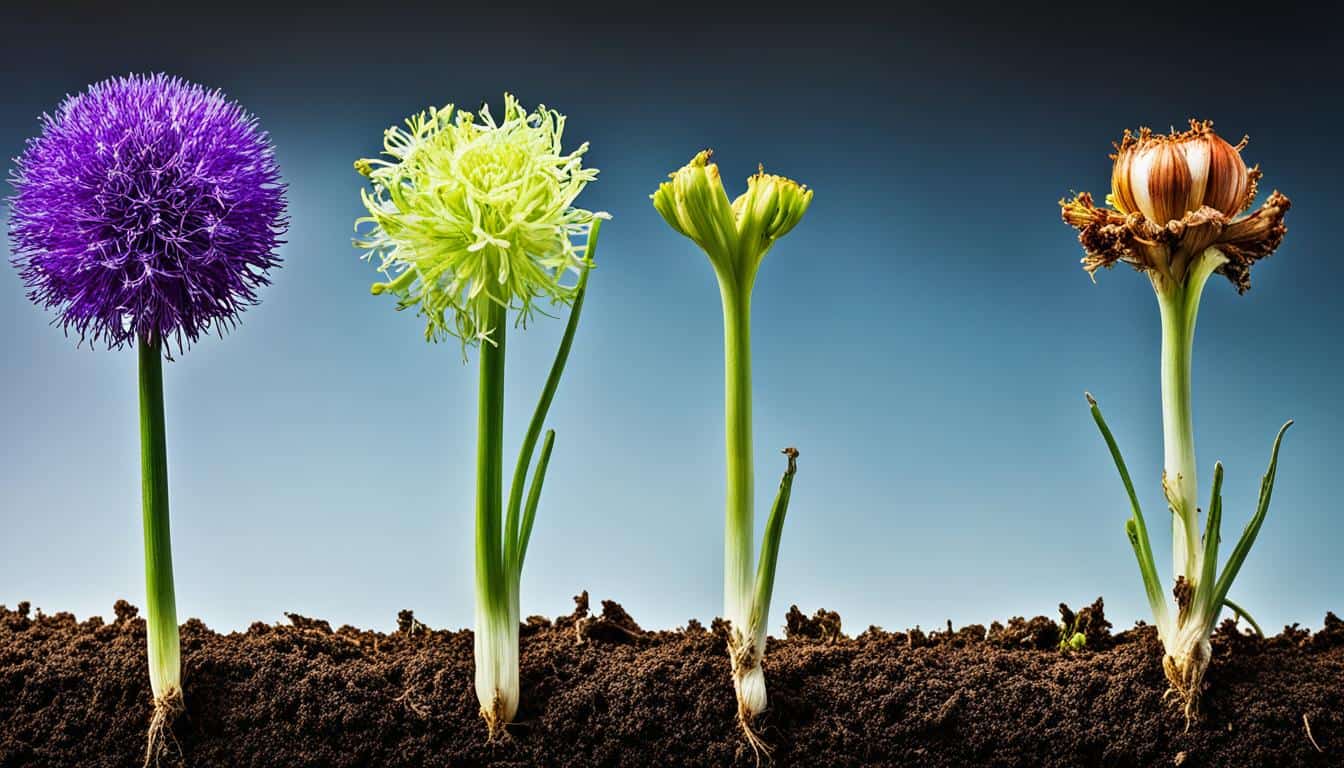

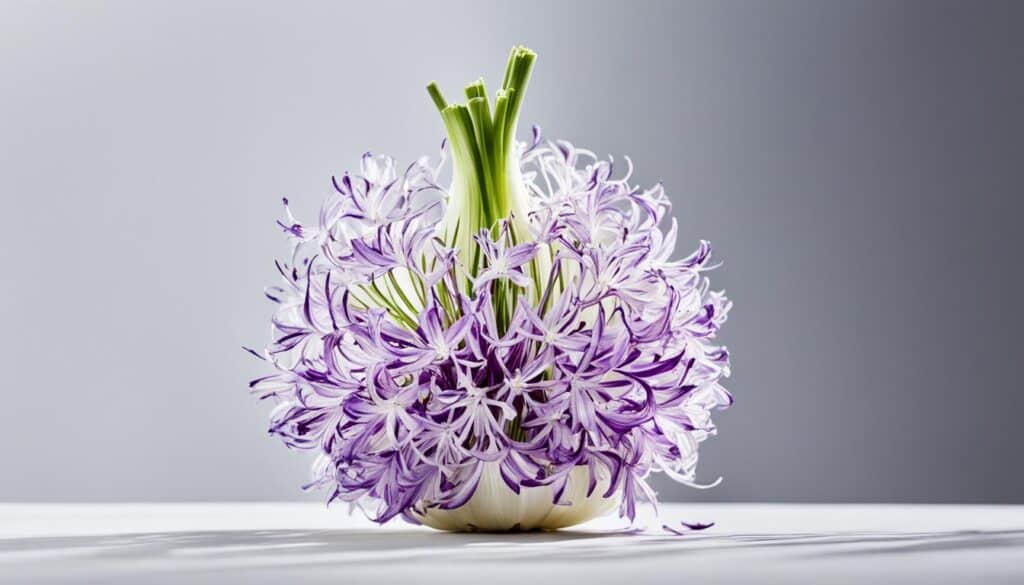
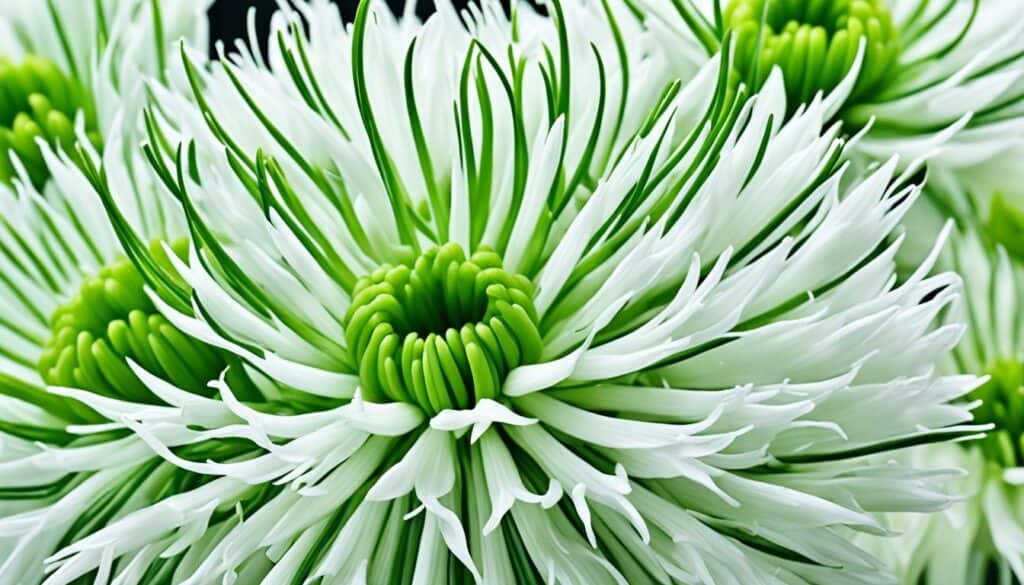
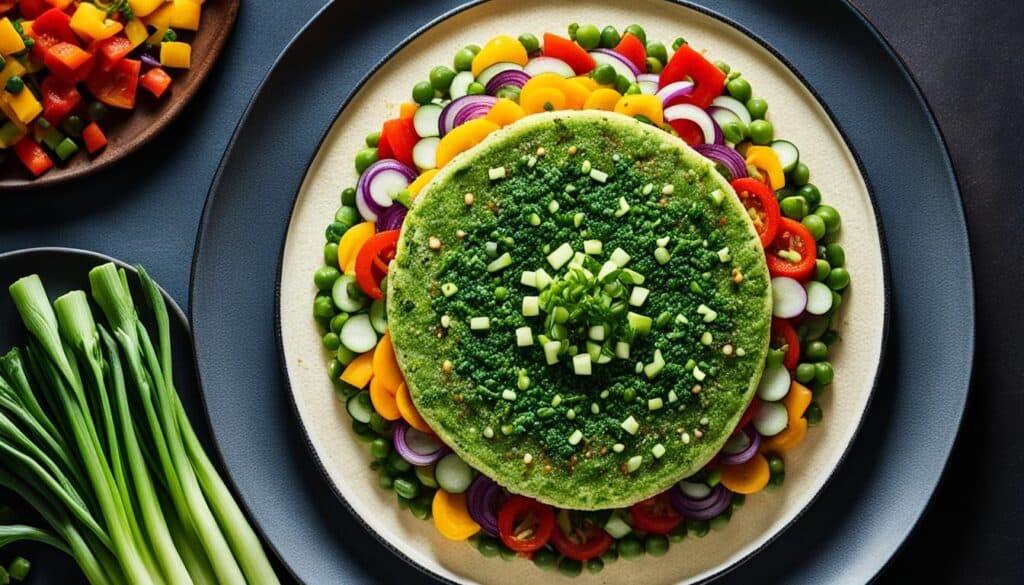
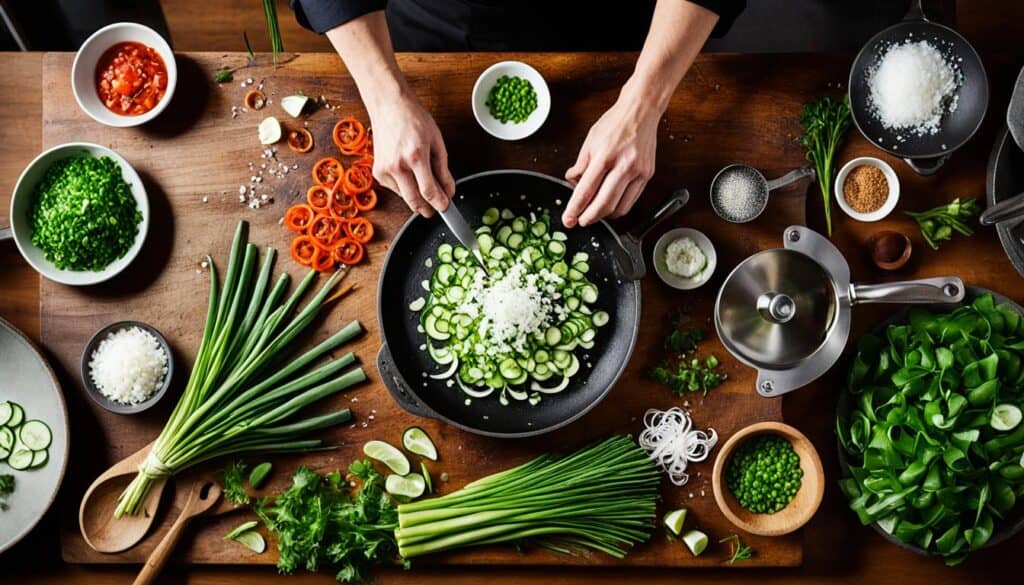



Leave a Reply